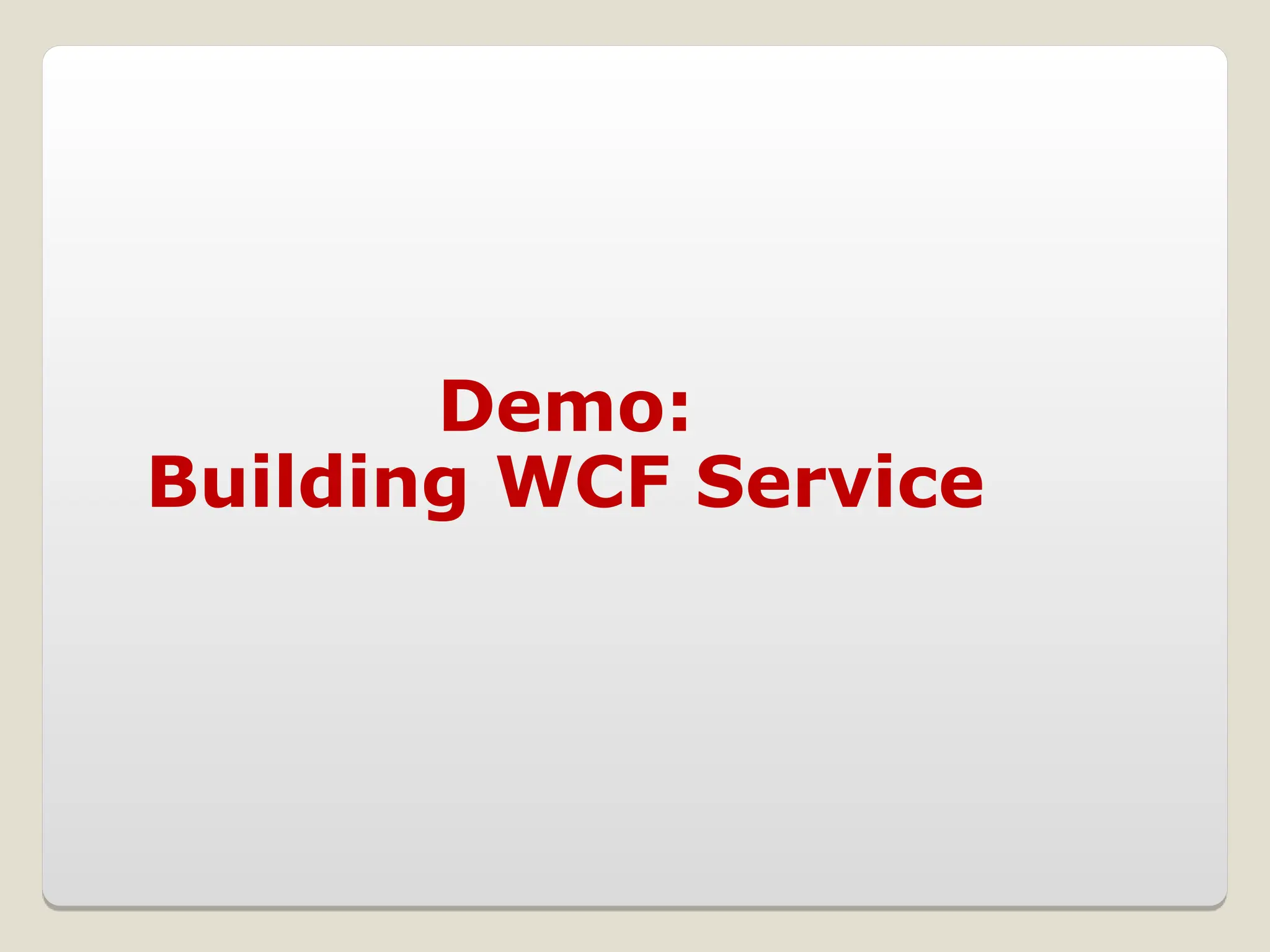The document provides an overview of the .NET Framework 3.5 and Windows Communication Foundation (WCF), detailing its architecture, types of services, and configuration elements. It emphasizes WCF's role in unifying Microsoft's distributed computing technologies, ensuring interoperability, and facilitating service-oriented development. Key elements discussed include service contracts, data contracts, binding configurations, and steps to create WCF services.
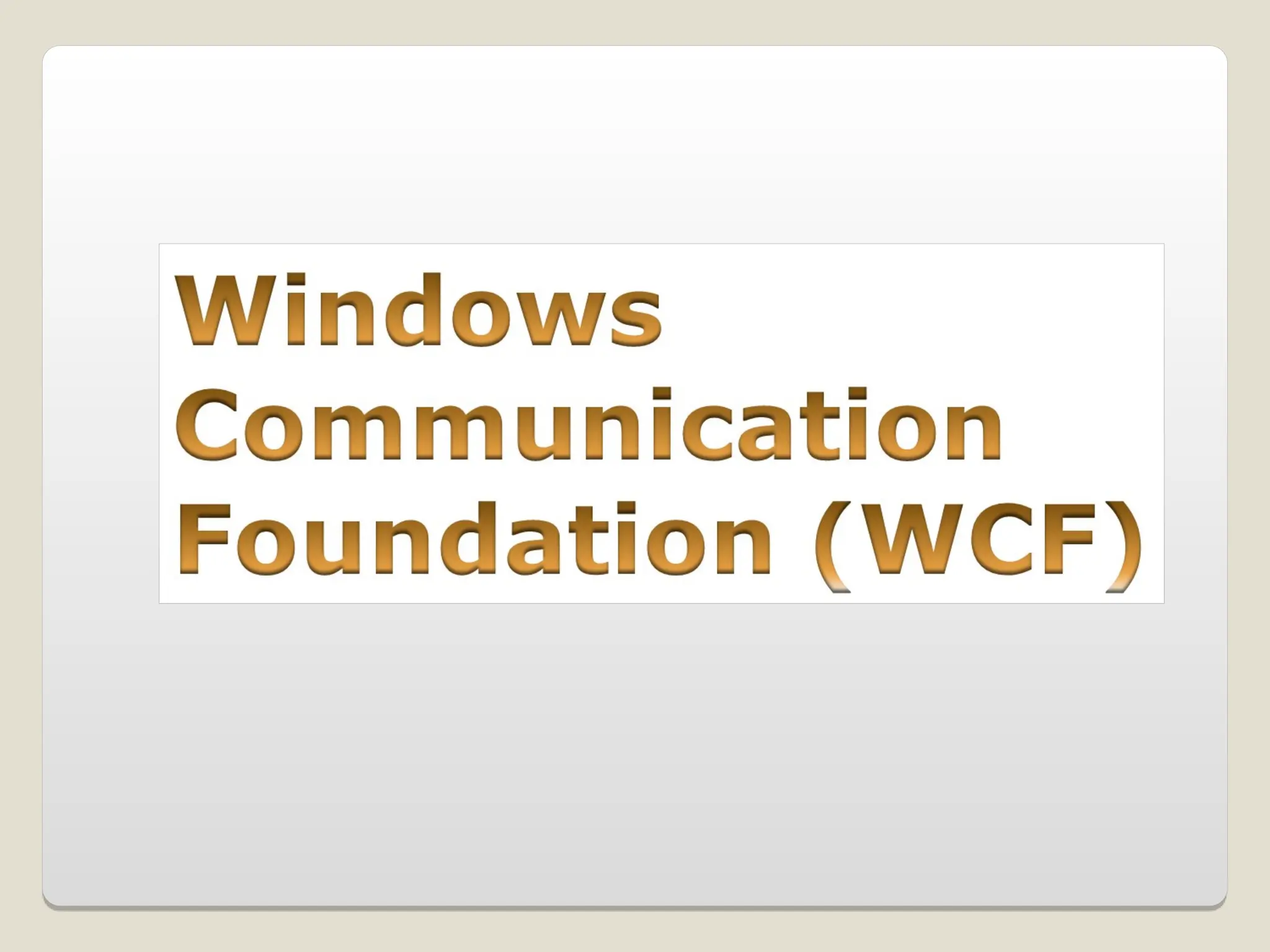
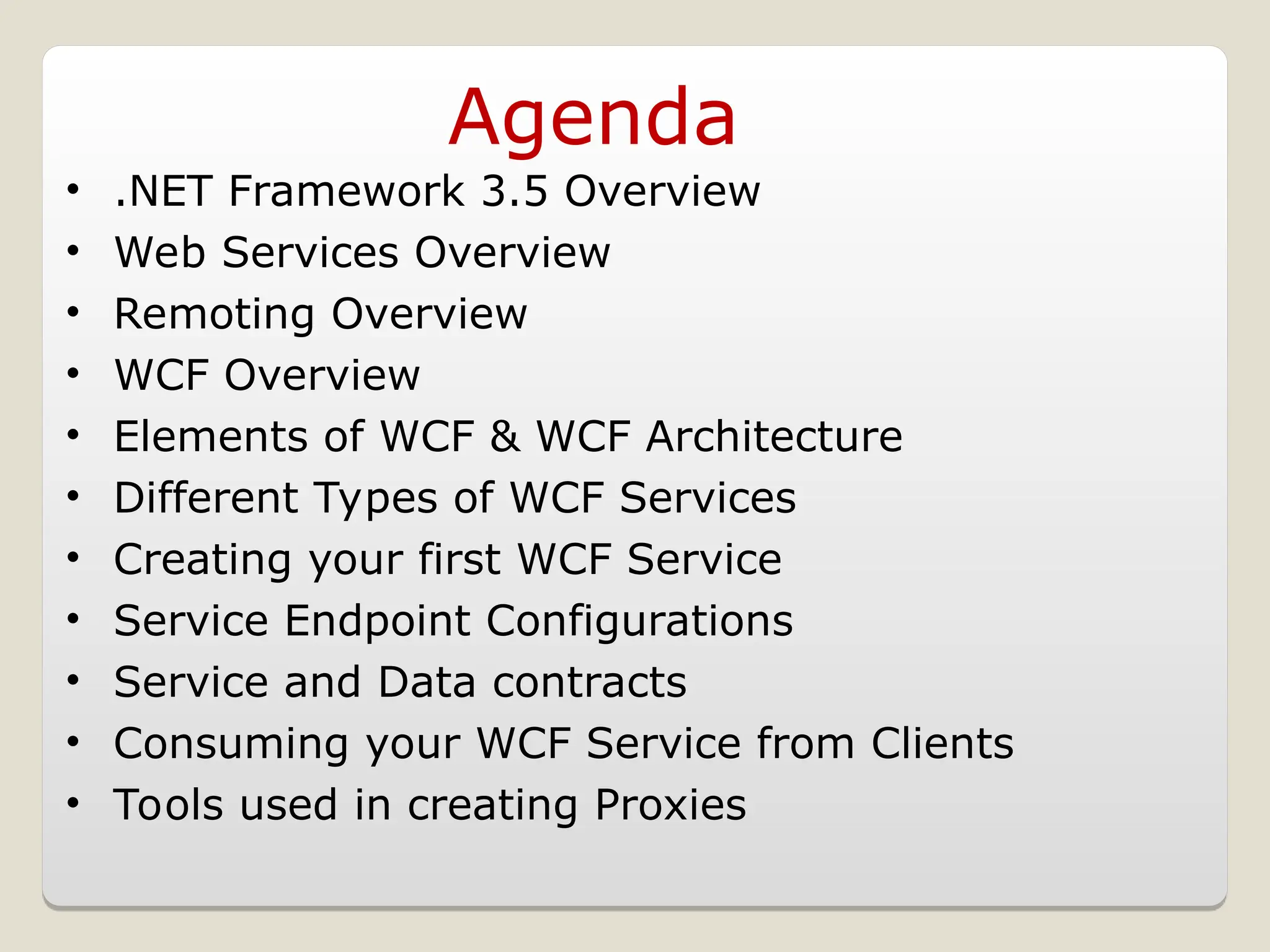

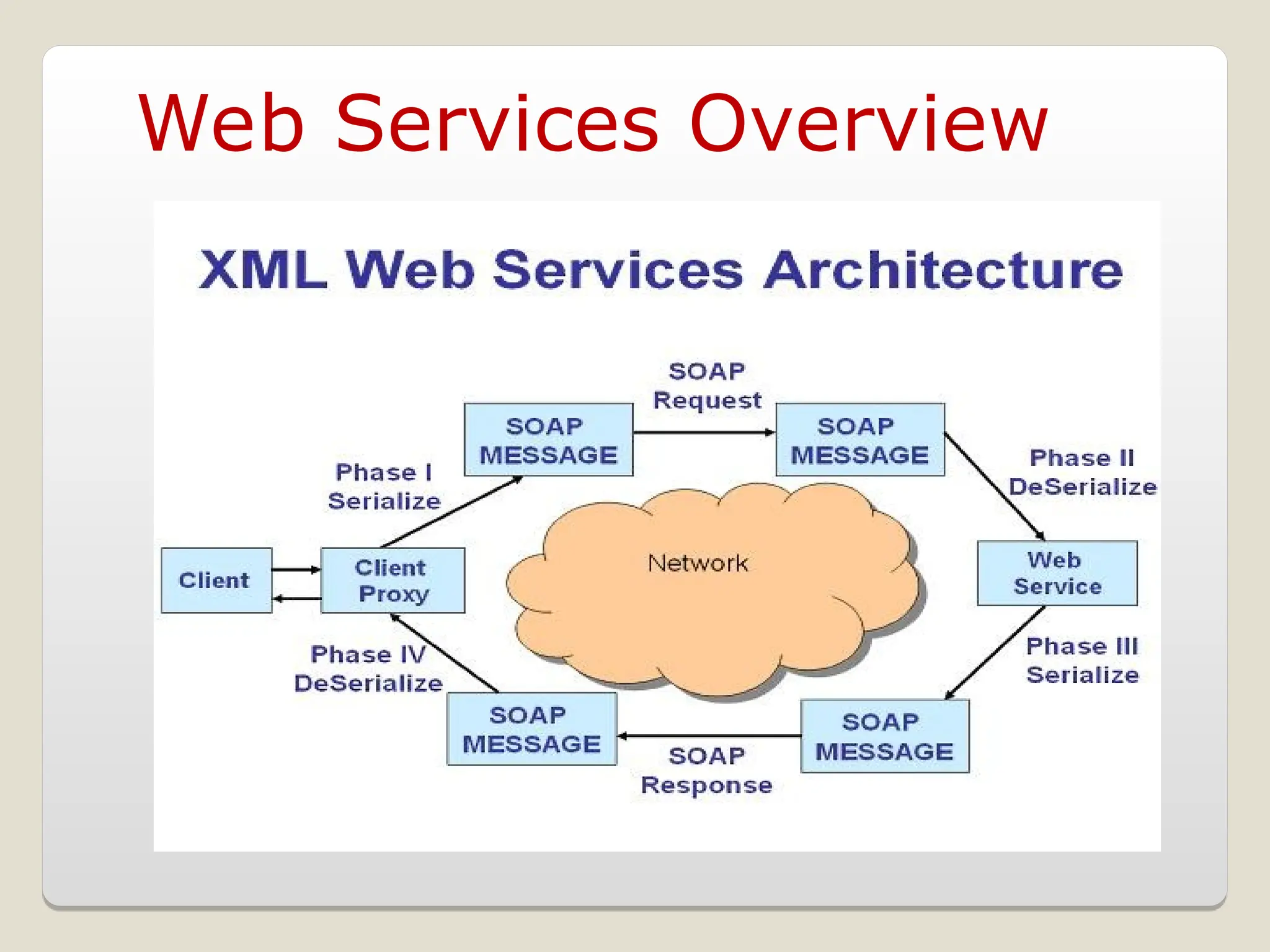
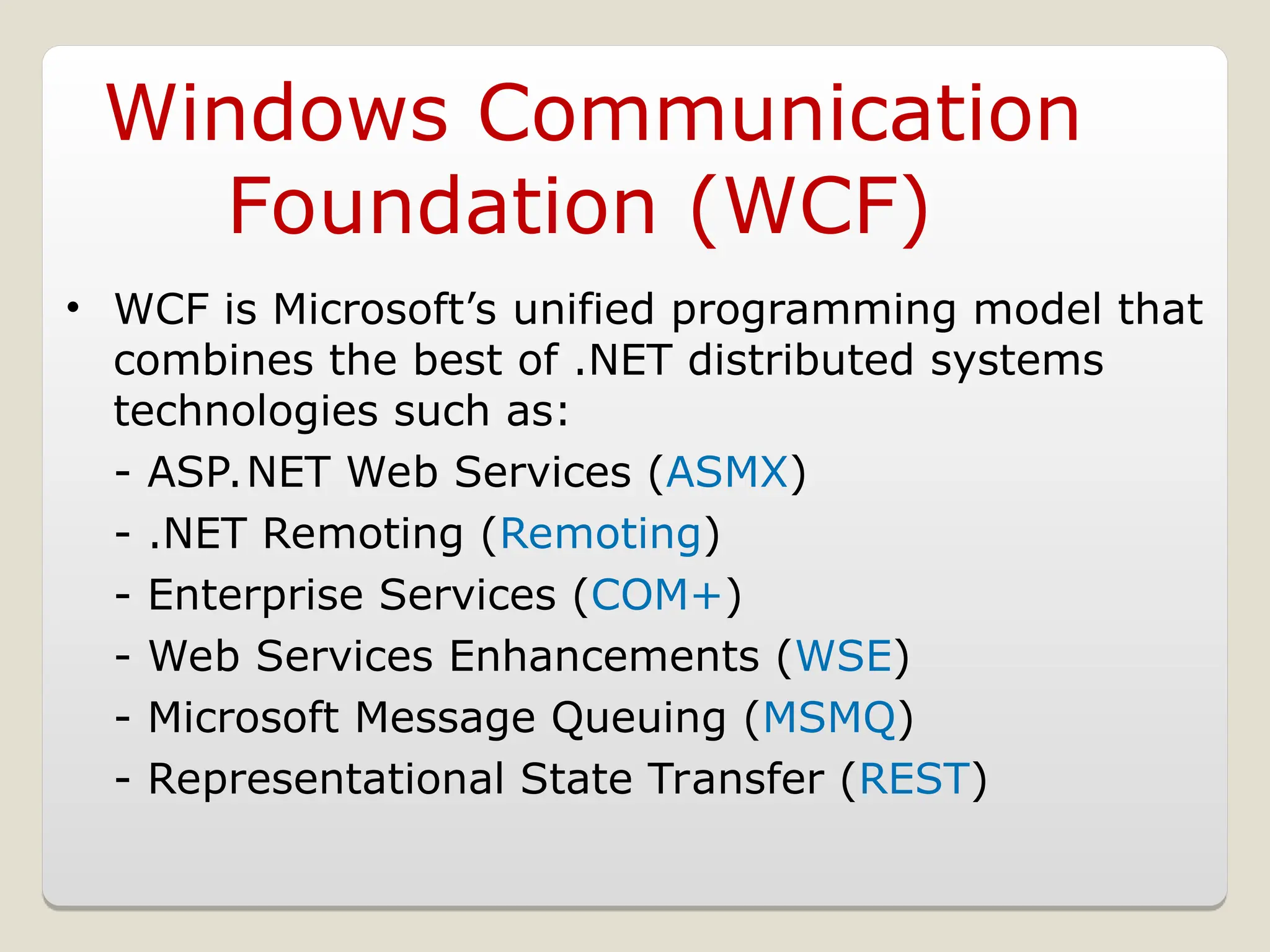


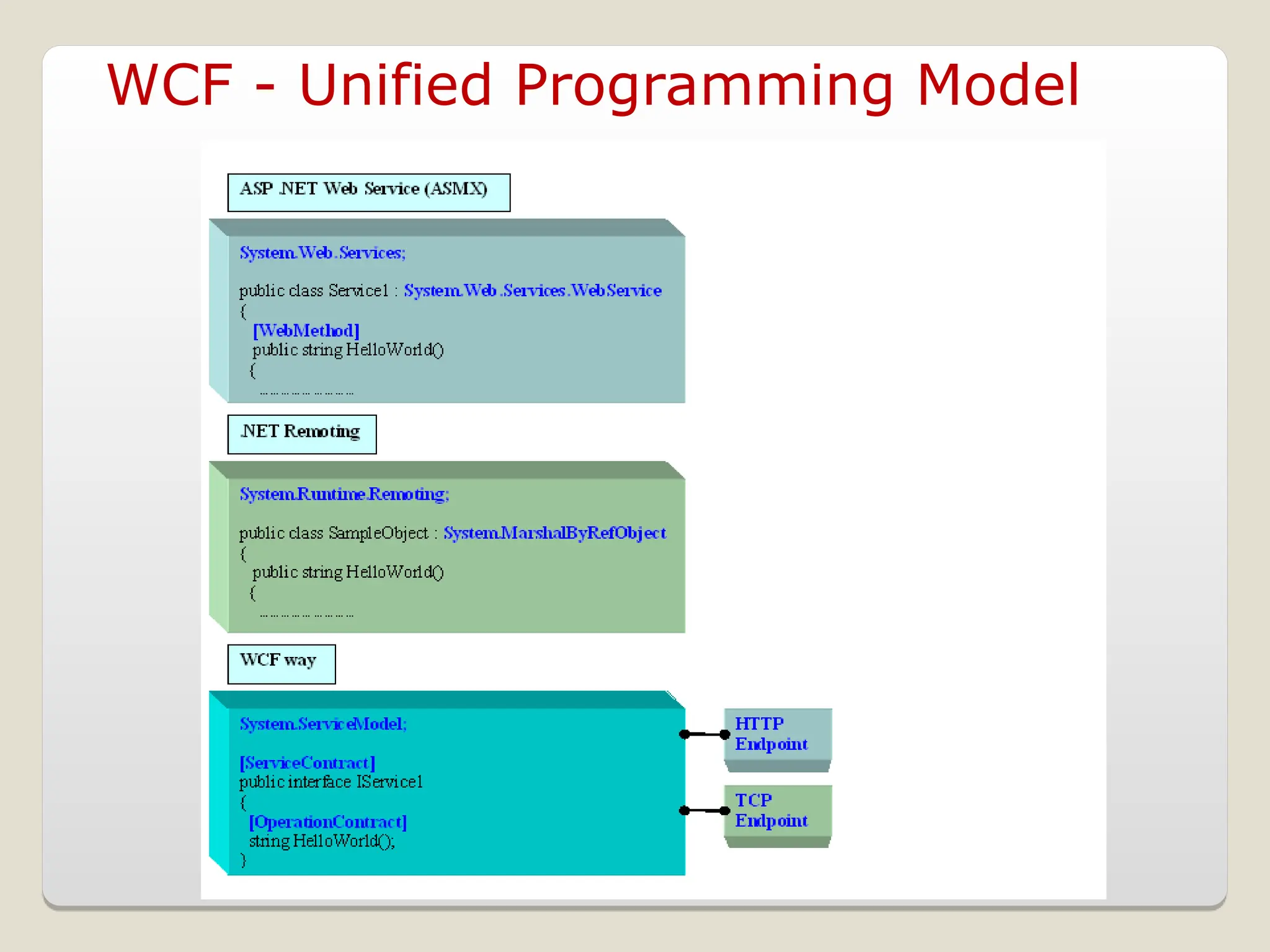
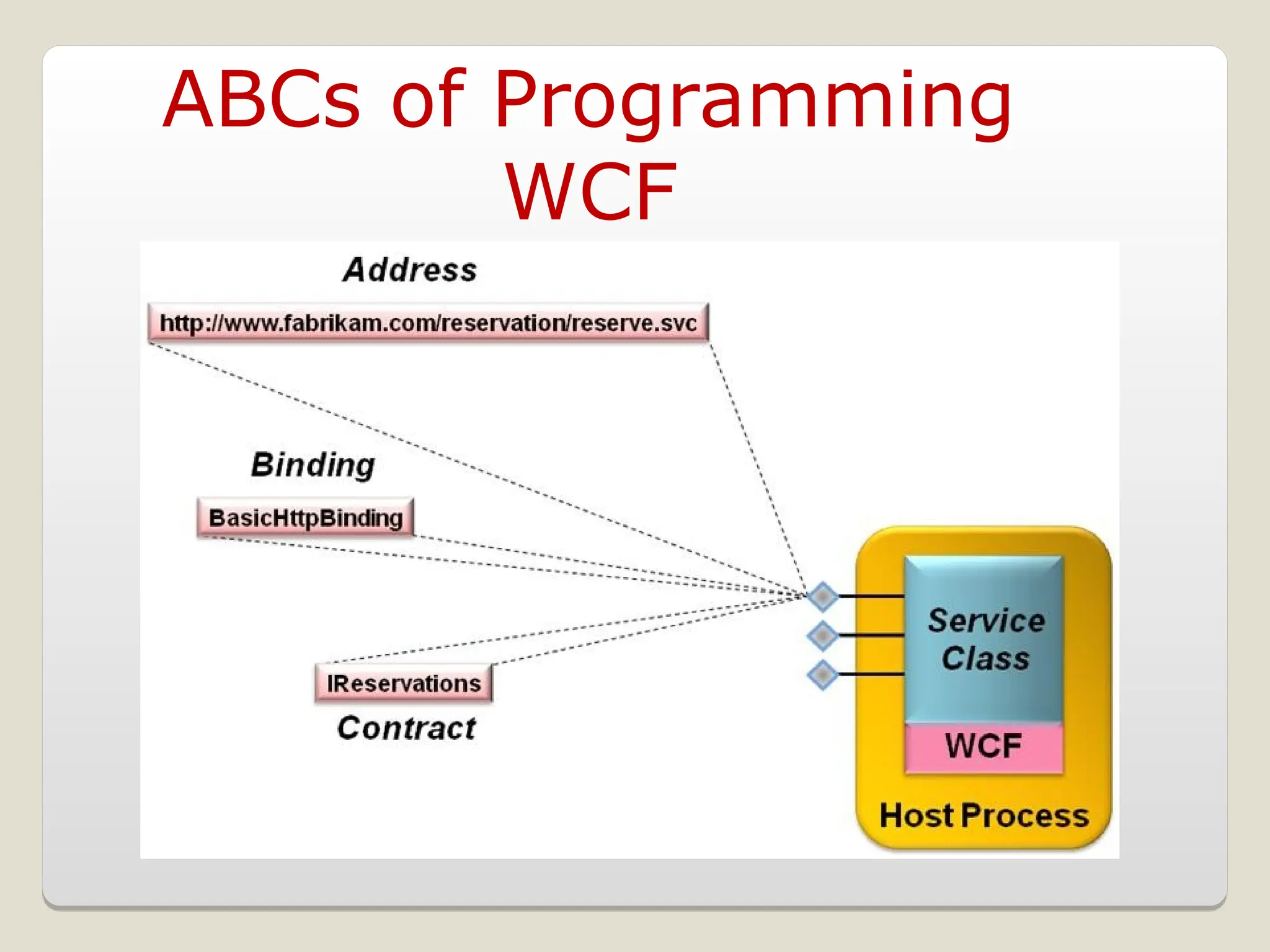
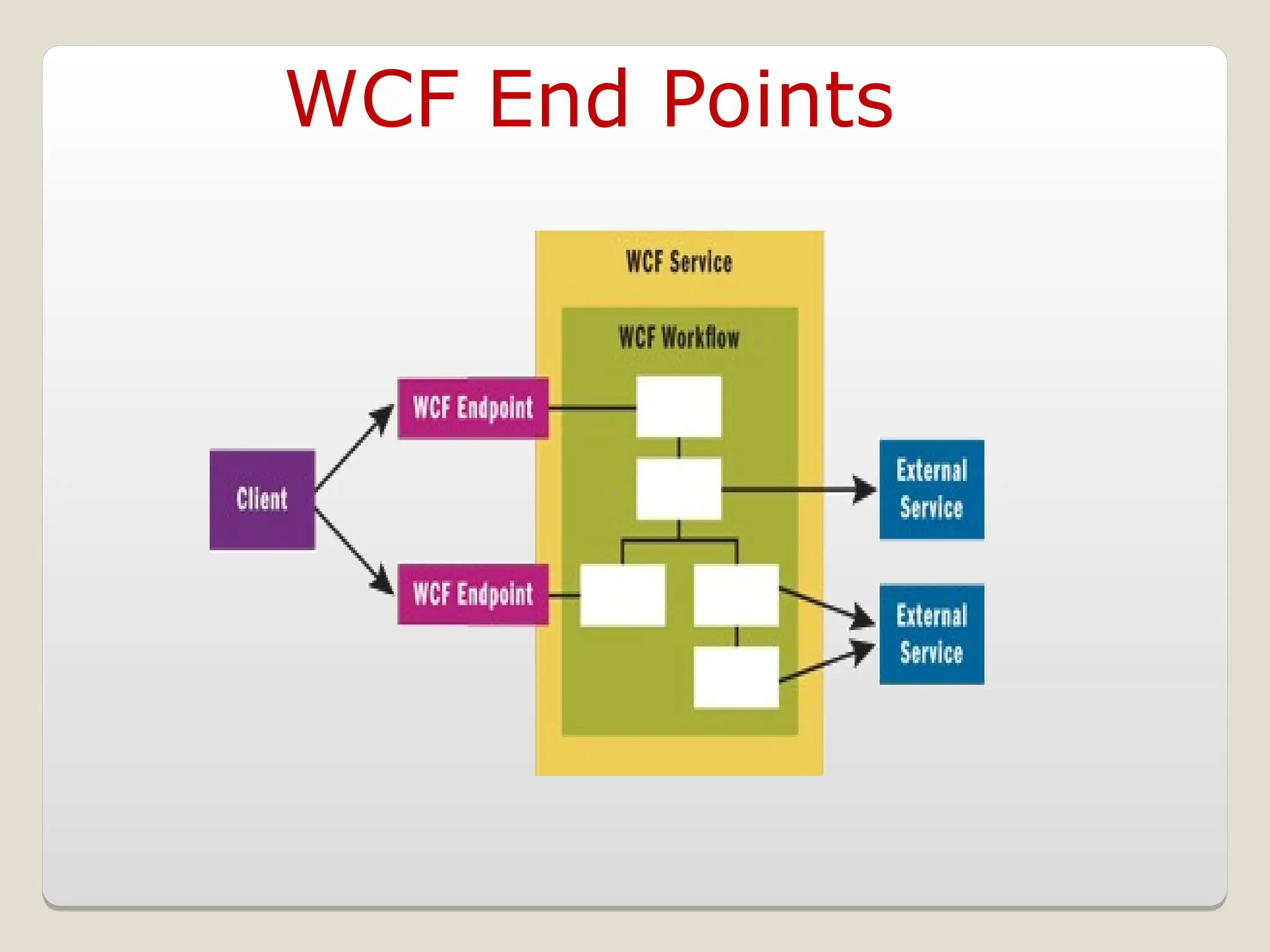
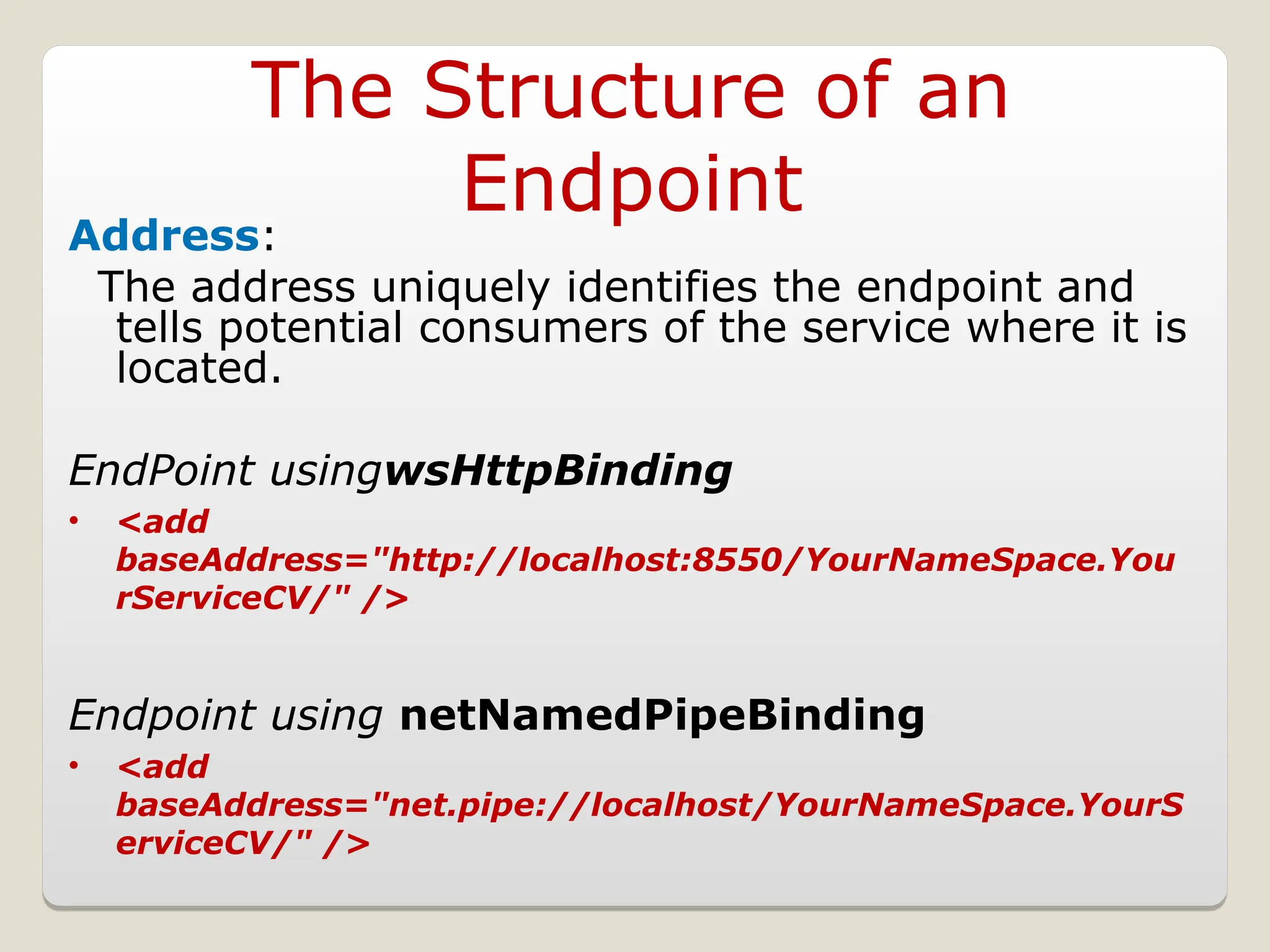

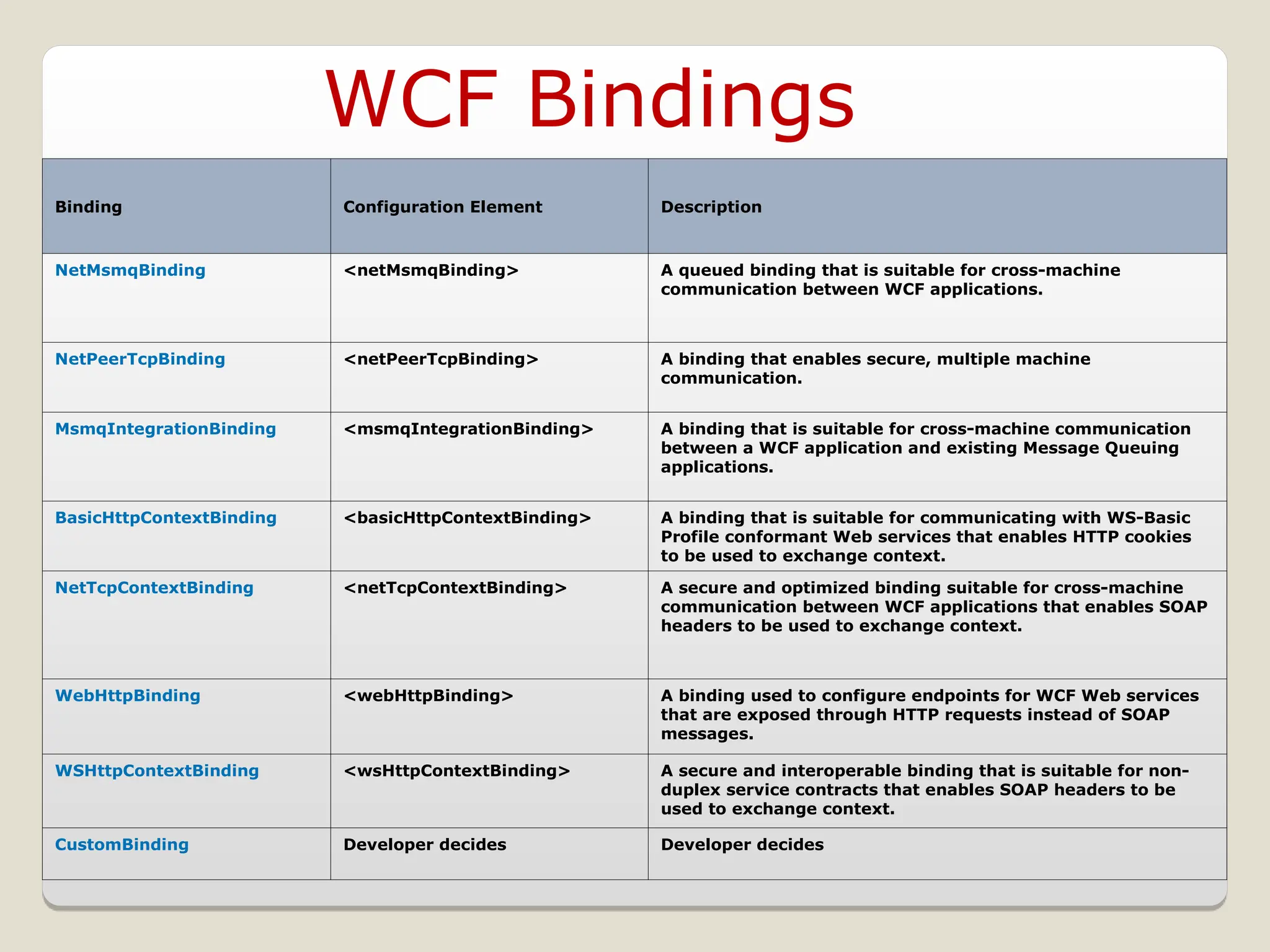
![Steps for Creating WCF Services • Design and Implement WCF Services - [ServiceContract] & [ServiceBehavior] - [OperationContract] & [OperationBehavior] - [DataContract] & [DataMember] - [MessageContract] & [MessageHeader] & [MessageBodyMember] - [FaultContract] • Configure WCF Services - web.config or app.config - Endpoint details: Address, Binding & Contract (SvcConfigEditor.exe)](https://image.slidesharecdn.com/wcfpresentation-240811132027-d12790db/75/WCFPresentation-ppt-WCFPresentation-ppt-WCFPresentation-ppt-14-2048.jpg)
![ServiceContract Use the ServiceContract attribute on an interface (or class) to define a service contract. ServiceContract combined with an endpoint and address exposes the service to the client Service class will implement a ServiceContract – Implementing the interface marked with ServiceContract attribute Example:- [ServiceContract] public interface IMyFirstService { //TODO : Define your Operations here }](https://image.slidesharecdn.com/wcfpresentation-240811132027-d12790db/75/WCFPresentation-ppt-WCFPresentation-ppt-WCFPresentation-ppt-15-2048.jpg)
![OperationContract OperationContract attribute is used in the class (or interface) methods to define the contract's service operations OperationContract exposes the service operation to the client All Service Operations (methods) to be exposed to the clients should be marked with OperationContract attribute Example:- [ServiceContract] public interface IMyFirstService { [OperationContract] string GetData(int value); }](https://image.slidesharecdn.com/wcfpresentation-240811132027-d12790db/75/WCFPresentation-ppt-WCFPresentation-ppt-WCFPresentation-ppt-16-2048.jpg)

